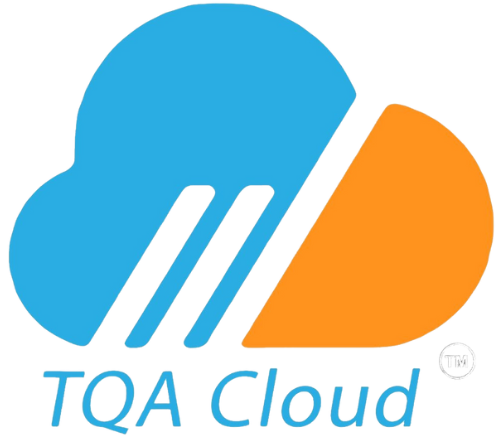QMS Management Tools
Quality Management System (QMS) tools play a crucial role in ensuring that an organization’s processes, products, and services meet the highest quality standards. Implementing these tools effectively can lead to increased efficiency, reduced risk, and improved customer satisfaction. See a description below of each of the Quality Management System tools.
This video describes how to add, edit, and delete records while using TQA.Clouds QMS Management Tools.
Nonconformance Reports (NCR)
NCR stands for Non-Conformance Report. It is a document used to track issues or incidents that do not meet specified requirements or standards. When a non-conformance occurs, an NCR is raised to document the issue and initiate corrective and preventive actions.
The NCR typically contains information about the non-conformance, including the date, the person who identified the issue, a description of the problem, and any related documentation or evidence. The NCR also includes information about any corrective and preventive actions taken, such as repairs, replacements, or process improvements.
NCRs are important because they help organizations identify and correct issues that can impact product quality, safety, or compliance with regulations or standards. By tracking non-conformances and their corrective actions, organizations can identify trends and recurring issues, implement improvements, and prevent future non-conformances. NCRs are also a critical component of many quality management systems, such as ISO 9001, which require organizations to document non-conformances and take corrective and preventive actions. Overall, NCRs are an important tool for ensuring quality, safety, and compliance in a wide range of industries and applications.
Corrective and Preventative Actions (CAPA)
CAPA stands for Corrective and Preventive Actions. It is a quality management system process used to identify, investigate, and address the root cause of non-conformances, defects, or other issues in order to prevent their recurrence.
The corrective action part of CAPA is similar to what we described earlier – it involves taking action to address the root cause of a problem in order to prevent its recurrence. However, the preventive action part of CAPA goes further by proactively identifying and addressing potential issues before they occur. This includes analyzing trends and identifying areas for improvement to prevent future non-conformances.
The CAPA process is an essential component of many quality management systems, such as ISO 9001, and is critical for maintaining product quality, improving process efficiency, and ensuring regulatory compliance. By implementing an effective CAPA process, organizations can identify and address issues before they become major problems, leading to improved customer satisfaction and organizational success.
Approved Supplier List (ASL)
The Approved Supplier List (ASL) is a crucial quality management tool that enables organizations to identify, evaluate, and maintain a list of trusted suppliers. This tool allows users to easily add, update, and track supplier details. By ensuring that only qualified suppliers are included in the list, organizations can effectively mitigate risks associated with poor product quality, delayed deliveries, or non-compliance with industry standards. The ASL helps streamline procurement processes and fosters strong relationships with suppliers, ultimately contributing to an efficient quality management system.
Audit Management Tool
The Audit Management tool is designed to facilitate the planning, execution, and monitoring of internal and external audits. This tool comes with attachment capabilities, allowing users to upload relevant documents, evidence, and images for each audit. Additionally, the tool enables users to input and track audit findings, providing a clear and organized overview of identified issues. By centralizing audit information and promoting transparency, the Audit Tracking Tool helps organizations maintain compliance with regulatory requirements, identify areas for improvement, and continuously enhance their quality management systems.
Engineering Change Notification (ECN)
The Engineering Change Notification (ECN) tool is an essential component of an effective quality management system, specifically designed to manage and control engineering changes within an organization. This SharePoint custom form allows users to create, review, and approve change requests related to product design, manufacturing processes, or other technical aspects.
The ECN tool ensures that all stakeholders are informed about the changes, enabling them to assess potential impacts and make informed decisions. By streamlining the change management process, the ECN tool helps organizations maintain product quality, reduce errors, and minimize disruptions in production.
Management of Change (MOC):
Management of Change (MOC) is a systematic approach to managing organizational changes that may impact safety, quality, or regulatory compliance. This SharePoint custom form enables users to document and evaluate proposed changes, such as modifications to equipment, processes, or personnel.
The MOC tool helps organizations identify potential risks, assess the feasibility of proposed changes, and implement necessary actions to maintain the integrity of their quality management system. By providing a structured framework for managing change, the MOC tool ensures that organizations remain agile and adaptable while maintaining a strong commitment to quality.
Risk Register:
The Risk Register is a vital quality management tool that helps organizations identify, assess, and prioritize risks associated with their operations. This tool allows users to document and track risks and assign likelihood to each identified risk. By providing a centralized repository for risk information, the Risk Register enables organizations to monitor and mitigate potential issues proactively, ensuring the effectiveness of their quality management systems. Regularly updating and reviewing the Risk Register helps organizations maintain a strong risk-aware culture, fostering continuous improvement and ensuring compliance with industry standards.
Hazard Assessment Tool:
The Hazard Assessment tool is a specialized quality management solution designed to provide a comprehensive overview of risks associated with a specific department within an organization. By utilizing the information stored in the Risk Register, this SharePoint custom form extracts and organizes all risks related to the selected department, offering a streamlined and focused risk assessment.
The Hazard Assessment tool not only displays the risks but also includes their corresponding mitigation measures, enabling departmental managers and team members to effectively address potential hazards. This comprehensive view allows for targeted risk management, ensuring that departmental operations are aligned with the organization’s overall quality and safety objectives.
